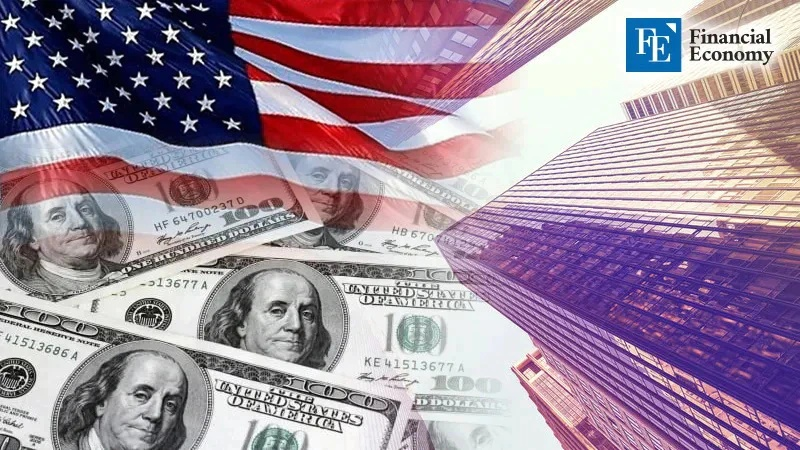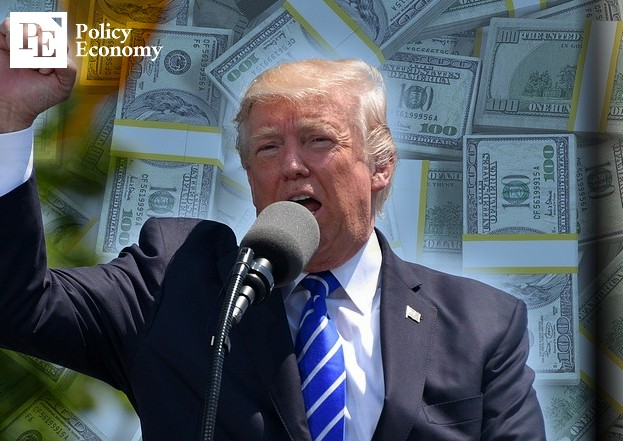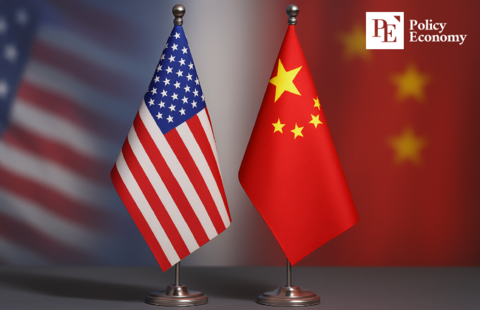Trump Eyes Forcing Allies to Buy 100-Year U.S. Bonds
Input
Modified
CEA’s Miran Report Revives Calls for Ultra-Long Treasuries and Weak-Dollar Strategy, Evoking Memories of the Plaza Accord

Amid rising global economic tensions, the concept of a so-called “Mar-a-Lago Accord” is increasingly being discussed on Wall Street and in international financial circles. With President Donald Trump back in power, renewed attention is being paid to the external economic strategy proposed by one of his top advisors. The strategy, outlined in a widely circulated policy report, presents a radical blueprint to overhaul the U.S.-led global financial order established after World War II. Central to the proposal is a deliberate push for a weaker U.S. dollar—a move aimed at addressing the country's twin deficits in fiscal balance and current account.
A Radical Fiscal Strategy Resurfaces
On April 14 (local time), The New York Times and other U.S. media reported that the Trump administration is reviewing a multilateral currency adjustment framework dubbed the "Mar-a-Lago Accord." The name is derived from Trump’s private Florida resort in Palm Beach, which has functioned as a hub of international diplomacy since his presidency. The idea was first proposed in November by Stephen Miran, a member of the White House Council of Economic Advisers (CEA), in a report titled “A User’s Guide to Restructuring the Global Trading System.”
In the report, Miran argues that U.S. allies should share the cost of correcting America’s chronic trade deficit caused by a strong dollar. He proposes that allies sell off their short-term U.S. Treasury holdings (under 10 years) and instead buy 100-year ultra-long-term Treasuries—preferably at near-zero interest rates. This move would reduce the burden of interest payments on debt issued during high-rate periods, helping to stabilize the U.S. fiscal deficit. It would also boost demand for long-term bonds, ease upward pressure on interest rates, and weaken the U.S. dollar—one of the core objectives.
Miran further suggests that if allies resist this proposal, tariffs and security cooperation should be used as leverage in diplomatic negotiations. He argues that the high tariffs used during the 2018–2019 U.S.–China trade war increased revenue without fueling inflation, proposing a “20% optimal tariff rate” by country. His broader theory is that if allies buy U.S. debt instruments like perpetual bonds at zero interest, the dollar can maintain reserve currency status with reduced fiscal pressure, ultimately restoring trade balance and narrowing the U.S. current account deficit.

'Mar-a-Lago Accord' to Weaken Dollar and Restructure Global Trade
The Mar-a-Lago Accord’s three strategic goals are to:
- Correct the structurally strong dollar
- Revive U.S. manufacturing
- Maintain the dollar’s global reserve currency status
Historically, U.S. administrations have struggled to achieve all three simultaneously, as they inherently conflict. The U.S. exports debt (Treasuries), not goods like aircraft or automobiles, and must endure trade deficits to supply the world with dollar reserves. Unlike most countries, the U.S. does not experience the corrective currency depreciation typically triggered by trade deficits, resulting in what economists call the "Triffin Dilemma."
President Trump has consistently emphasized the need to “fix what’s broken” and balance the federal budget. As of February 2024, U.S. national debt has surged to $36.2 trillion—double the amount from 15 years ago, largely due to pandemic-era stimulus. This flood of liquidity has fueled inflation and driven interest rates upward, increasing debt servicing costs. The average interest rate on government bonds has more than doubled—from 1.61% in 2021 to 3.28% today—and annual interest payments have reached $1.158 trillion, surpassing the U.S. defense budget of $886 billion.
Trump and his economic team have repeatedly identified bond yields as a top priority. Despite market turmoil caused by his shifting tariff policies, insiders say he pays little attention to the stock market. In a congressional address last month, Trump boasted that “Treasury yields have fallen beautifully.” Treasury Secretary Scott Besant also stated that the administration is closely monitoring 10-year Treasury yields and is weighing policy actions to bring them down. Since Trump's return, the 10-year yield has fallen from 4.8% to around 4.2%.
Analysts say the proposed accord is reminiscent of the 1985 Plaza Accord, in which the U.S., Japan, West Germany, France, and the U.K. agreed to intervene in currency markets to weaken the U.S. dollar. Participating countries sold dollars and bought their own currencies to ease U.S. trade deficits. This led to over 50% appreciation in the Japanese yen and Deutsche mark over two years, while the dollar plummeted.
For Japan, this triggered long-term economic consequences. The yen surged from 250 to 120 per dollar, prompting ultra-low interest rate policies that created asset bubbles in real estate and stocks. After 1989, interest rate hikes and property market crackdowns caused the bubbles to burst, and Japan entered a prolonged downturn known as the “Lost Decade,” which continues to cast a shadow.
If the Mar-a-Lago Accord materializes, South Korea could face mixed consequences:
Short-term benefits might include a stronger won, lower import prices, and reduced production costs.
Long-term risks could include job losses and export slowdown if Korean firms shift production to the U.S., and reduced foreign exchange liquidity if reserves become overly reliant on illiquid long-term U.S. bonds.
Mixed Views on the Viability of the Miran Proposal
Opinions are divided on whether the plan is politically and economically viable. Skeptics argue that unlike 1985, today’s global economic instability makes multilateral participation unlikely. Even Miran acknowledges the scale of transformation involved, stating that "if implemented, this plan would rival the launch or collapse of the Bretton Woods system." He also concedes that convincing allies to shoulder the costs through tariffs or bond purchases may be unrealistic.
Still, some analysts believe the plan—in a modified or partial form—could be pursued if U.S. allies calculate that participation is cheaper than facing escalating tariffs. In such cases, a diluted version of the Mar-a-Lago Accord could emerge through bilateral negotiations over time.
Opinions are divided on whether the plan is politically and economically viable. Skeptics argue that unlike 1985, today’s global economic instability makes multilateral participation unlikely. Even Miran acknowledges the scale of transformation involved, stating that "if implemented, this plan would rival the launch or collapse of the Bretton Woods system." He also concedes that convincing allies to shoulder the costs through tariffs or bond purchases may be unrealistic.
Still, some analysts believe the plan—in a modified or partial form—could be pursued if U.S. allies calculate that participation is cheaper than facing escalating tariffs. In such cases, a diluted version of the Mar-a-Lago Accord could emerge through bilateral negotiations over time.





















